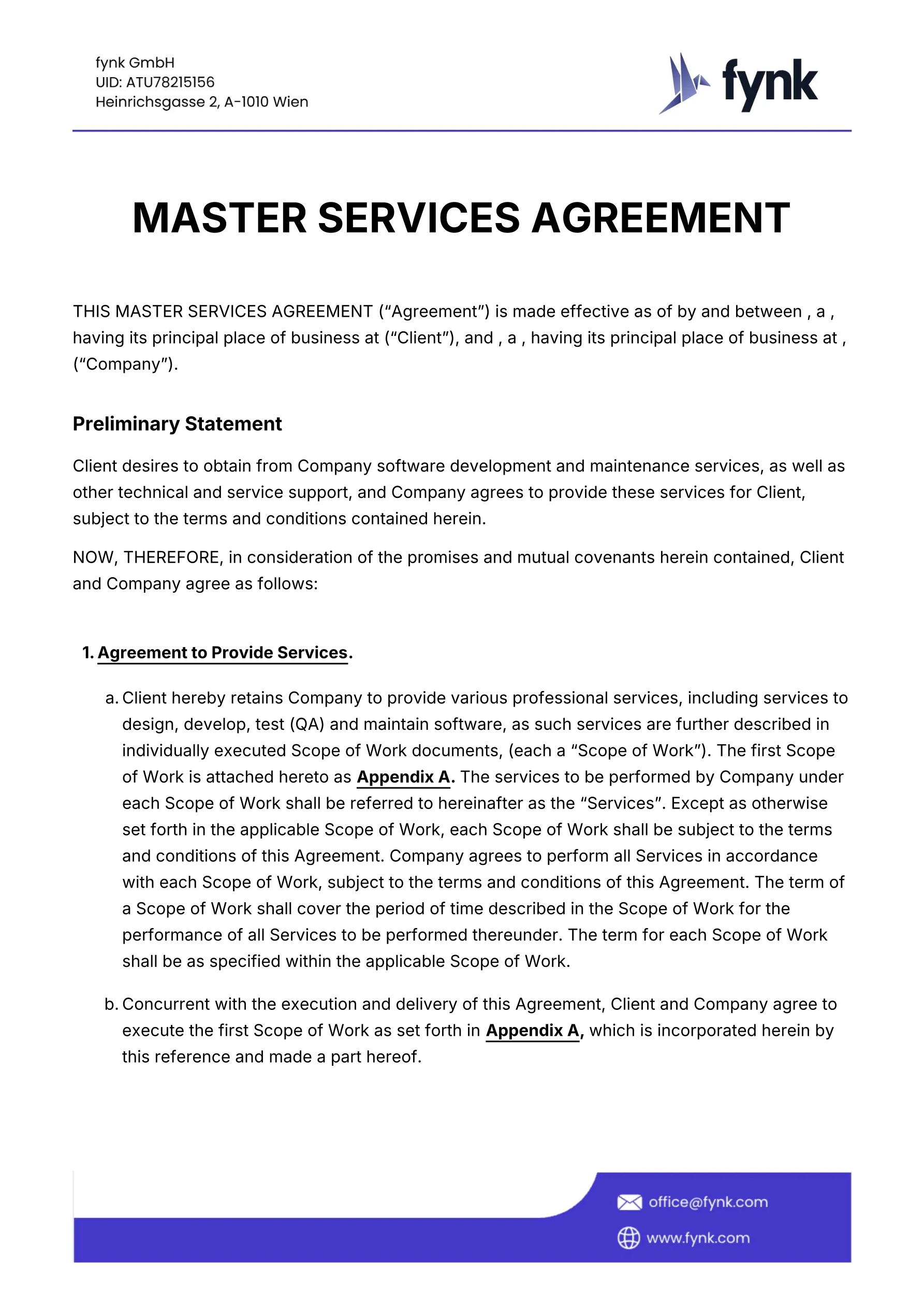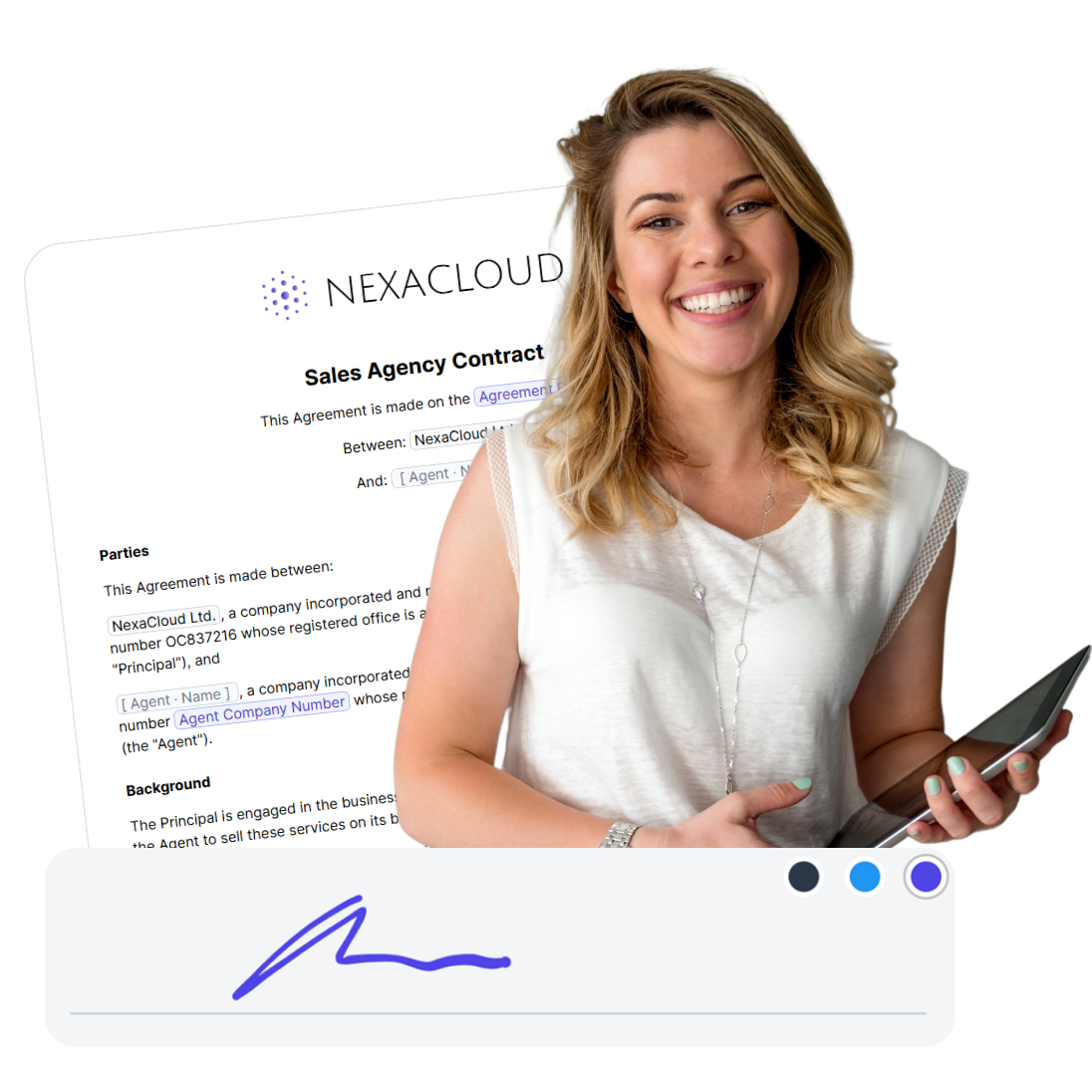SaaS contract management explained for buyers and vendors
If you work in SaaS, you know how quickly contracts can pile up. Each one comes with its own terms, renewals, and obligations, and before long it’s hard to keep track of what’s due or who’s responsible. Missed renewals, unclear clauses, and unused licenses can all cost you time and money. SaaS contract management keeps every agreement organized and easy to access, so you can protect revenue, stay compliant, and control your software spend. Keep reading to learn the best way to manage your SaaS agreements.
- What is SaaS contract management?
- Why your SaaS contract management needs CLM support
- How SaaS contracts differ from old-school software deals
- What every SaaS contract should include
- Contract lifecycle stages for SaaS: from creation to renewal
- 5 Mistakes to avoid when doing contract management in SaaS
- How to do SaaS contract management
- Choosing the right SaaS contract management tool
- Frequently asked questions
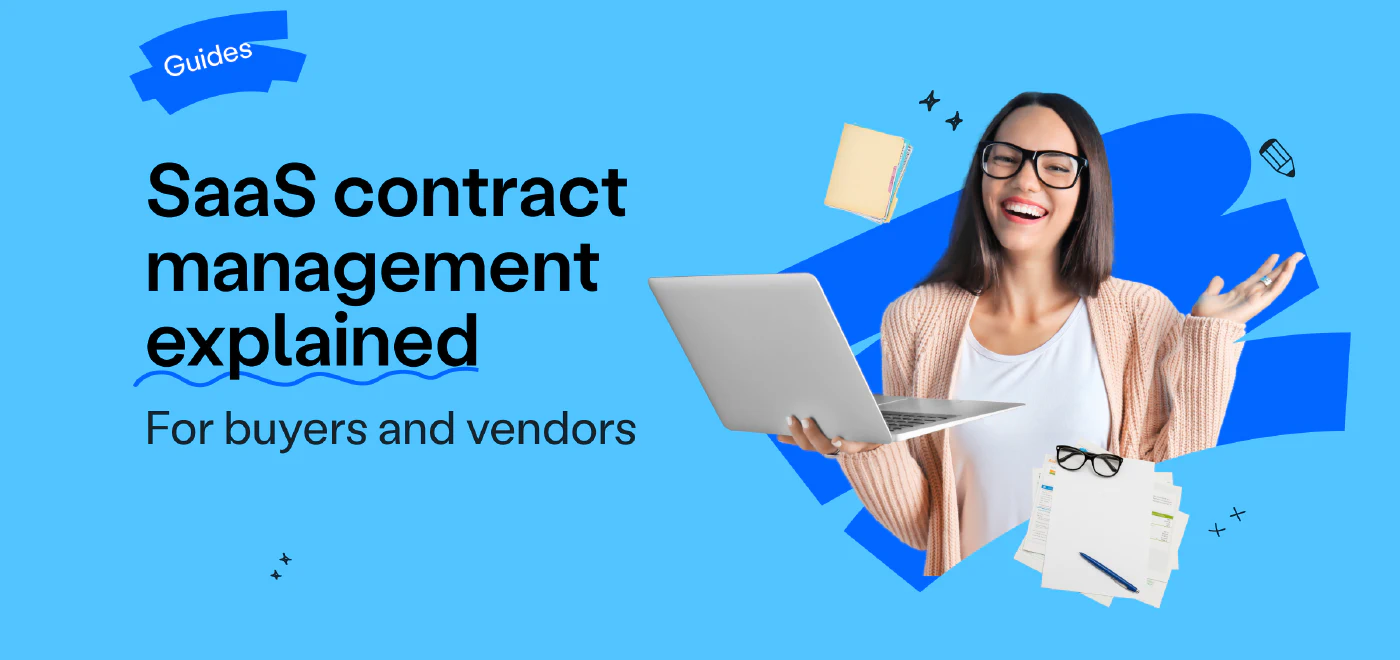
TL;DR
- SaaS contract management covers creating, negotiating, signing, storing, and renewing SaaS agreements in one reliable system.
- It helps you save time, reduce costs, and stay compliant by automating approvals, renewals, and tracking key terms.
- Vendors use it to protect revenue, manage renewals, and maintain consistency across deals.
- Buyers rely on it to control software spending, track usage, and avoid missed renewals or compliance risks.
- A strong CLM (Contract Lifecycle Management) system keeps clauses consistent, approvals fast, and visibility high.
- Well-managed SaaS contracts include clear renewal terms, data protection, liability limits, and usage details.
- When contracts are organized and automated, your SaaS business runs efficiently, transparently, and scales with confidence.
What is SaaS contract management?
SaaS contract management is the process of creating, negotiating, signing, storing, and renewing SaaS agreements in one reliable system. When efficiently managed, SaaS contract can go from a few inactive pieces of pages to active agreements that drive visibility, accountability, and growth.
Like every agreement, there’s two side of SaaS contracts:
- You are the seller: You provide the software and promise reliable service and support.
- You are the buyer: You pay for access and make sure the software meets your needs.
No matter what side of the agreement you’re on, learning the efficient way of handling SaaS contracts can help you to:
- ⏱️ Save time by automating approvals, renewals, and document tracking.
- 💰 Reduce costs by catching unused licenses and avoiding surprise renewals.
- 🛡️ Stay compliant with clear data protection and audit-ready documentation.
- 🤝 Improve collaboration between legal, finance, IT, and procurement teams.
- 🔍 Gain visibility into every contract’s status, value, and upcoming deadlines.
If you’re a SaaS vendor 🚀
Chances are, as a vendor, you’re managing customer contracts from start to finish. You’re handling new deals, renewals, and expansions while making sure legal and compliance boxes are checked.
A solid contract management process helps vendors to:
- Automate contract creation and approvals.
- Keep terms, pricing, and SLAs consistent across all customers.
- Integrate your contracts with your CRM for smoother workflows.
- Track renewals and potential churn before they affect revenue.
In other words, if you’re a vendor, you’re building predictable stream of revenue for your company and trying to turn each customer relationships into a loyal bond.
If you’re a SaaS buyer 🛒
If you’re on the buying side, you probably use more SaaS tools than you realize. Marketing, sales, finance, and HR all have their own platforms, and those contracts stack up fast.
SaaS contract management helps you bring order to all of that. It lets you:
- Store every vendor contract in one secure, searchable location.
- Track renewals before they catch you off guard.
- Compare license usage to what you’re actually paying for.
- Stay compliant with procurement, security, and data policies.
So here, you’re mainly dealing with spend, renewals, and vendor relationships. Your goal is to make sure every subscription delivers real value and supports your business goals.
Why your SaaS contract management needs CLM support
If you’re in SaaS both as a user and provider, you know how fast things move and can get tricky with all the deals, new tools and renewal reminders close overnight. To stop this, you’ll need a proper Contract Lifecycle Management (CLM) system that helps you
- Automates approval flows,
- Keeps clauses consistent, and
- Gives leadership the visibility to make faster, smarter calls.
🛒 If you’re a buyer, you’re protecting your company’s budget.
🚀 If you’re a vendor, you’re protecting your company’s revenue.
Either way, a proper CLM is what making the contract management clean and neat.
How SaaS contracts differ from old-school software deals
Old-school software contracts were simple. You bought a license, installed the program, and that was the end of it. They focused on ownership, had minimal ongoing obligations, and were basically static.
However, SaaS contracts live in a completely different world.
SaaS contracts today
- Are living partnerships. They renew, evolve, and scale with your business.
- Center around subscription and service, not ownership. You’re paying for continuous value, updates, and reliability.
- Include ongoing responsibilities for both sides (uptime, data protection, compliance, and support never stop).
- Require active management. You track renewals, monitor usage, and adjust as your needs change.
What every SaaS contract should include
The first step to managing SaaS contracts properly to to get to know them.
Every SaaS contract tells the story of how two companies agree to work together, and the details matter. Whether you’re buying software or selling it, the right clauses protect your interests, keep expectations clear, and prevent headaches later on.
Below are the non-negotiables every solid SaaS agreement should cover.
Term, renewal, and exit terms
This is the heartbeat of any SaaS deal. It defines how long the contract lasts, when it renews, and how either side can terminate it safely.
🚀 If you’re a vendor, make renewal terms clear and easy to manage. Predictable renewals mean predictable revenue.
🛒 If you’re a buyer, double-check notice periods and cancellation options. You don’t want to be stuck paying for another year because the renewal date slipped by.
A well-written renewal clause keeps both sides in sync and there won’t be no surprises, no awkward billing disputes.
SLA and uptime promises
A Service Level Agreement (SLA) sets expectations for reliability and response. It defines uptime targets, maintenance windows, and what happens if performance drops below the standard.
🚀 If you’re a vendor, this is where you show commitment. A solid SLA proves you take service seriously and builds trust fast.
🛒 If you’re a buyer, treat this section like insurance. It’s your safety net if things go wrong, and it ensures accountability when you need it most.
Usage metrics, seat counts, and pricing tiers
SaaS pricing isn’t one-size-fits-all. It often depends on how many users you have, how much data you use, or which features you unlock. That’s why usage and pricing details should always be crystal clear.
🚀 If you’re a vendor, make sure your pricing model scales smoothly as customers grow. Clarity now prevents billing conflicts later.
🛒 If you’re a buyer, keep an eye on your usage and make sure the contract spells out how overages or tier changes are handled.
A good SaaS contract should never leave either side wondering what they’re paying for or why.
Data protection and privacy
In SaaS, data is everything, and protecting it isn’t optional. This section covers how customer data is stored, secured, and used, as well as compliance with laws like GDPR or SOC 2.
🚀 If you’re a vendor, you’re responsible for making privacy and security part of your brand promise.
🛒 If you’re a buyer, this clause protects your company’s reputation. Make sure you understand where data lives and how it’s handled.
Liability and indemnification
Things don’t always go as planned. This clause defines who’s responsible, and to what extent, if something goes wrong. It’s your safety valve when the unexpected happens.
🚀 If you’re a vendor, limit your liability to what’s fair and within your control.
🛒 If you’re a buyer, make sure the contract gives you coverage if the software causes damage, breaches data, or fails to meet legal standards.
Contract lifecycle stages for SaaS: from creation to renewal
Every great SaaS partnership begins not with a handshake, but with a document, a digital promise. But a contract isn’t a single moment. It’s a journey, one that both the vendor and the buyer travel together. And like all journeys, it has stages, each with its own rhythm, its own risks, and its own chance to build something lasting.
Let’s follow that path.
Drafting and authoring
It begins with a blank page or more often, a SLA template that’s seen a hundred deals before.
🚀 For the vendor, drafting is about building a structure that can hold their business. They choose words carefully, balancing legal caution with sales optimism. The clauses must protect their IP, their uptime promises, their pricing logic. It’s like a shield and a statement: We know what we’re doing.
🛒 For the buyer, it’s a different kind of reading. They look for clarity. Transparency. Simplicity. They’re decoding: What happens if we grow? If we leave? If the software goes down at 3 a.m.? They’re not trying to trap anyone, just making sure they can live with the fine print once the ink dries.
💡 The best contracts read like agreements between humans, not battlefields between lawyers.
Negotiation and approvals
This is where the story gets interesting.
Everyone wants the same thing but they’re circling around the details that will define how that deal feels six months from now.
🚀 Vendors want to move fast. Their sales team dreams in quarterly targets, while their legal team dreams in risk mitigation. The art lies in keeping both awake and aligned.
🛒 Buyers are walking a tightrope between opportunity and responsibility. The software could unlock something big, but they can’t ignore what happens if promises aren’t met.
🗣 Good negotiations sound less like arguments and more like tuning instruments, both sides adjusting until the melody fits.
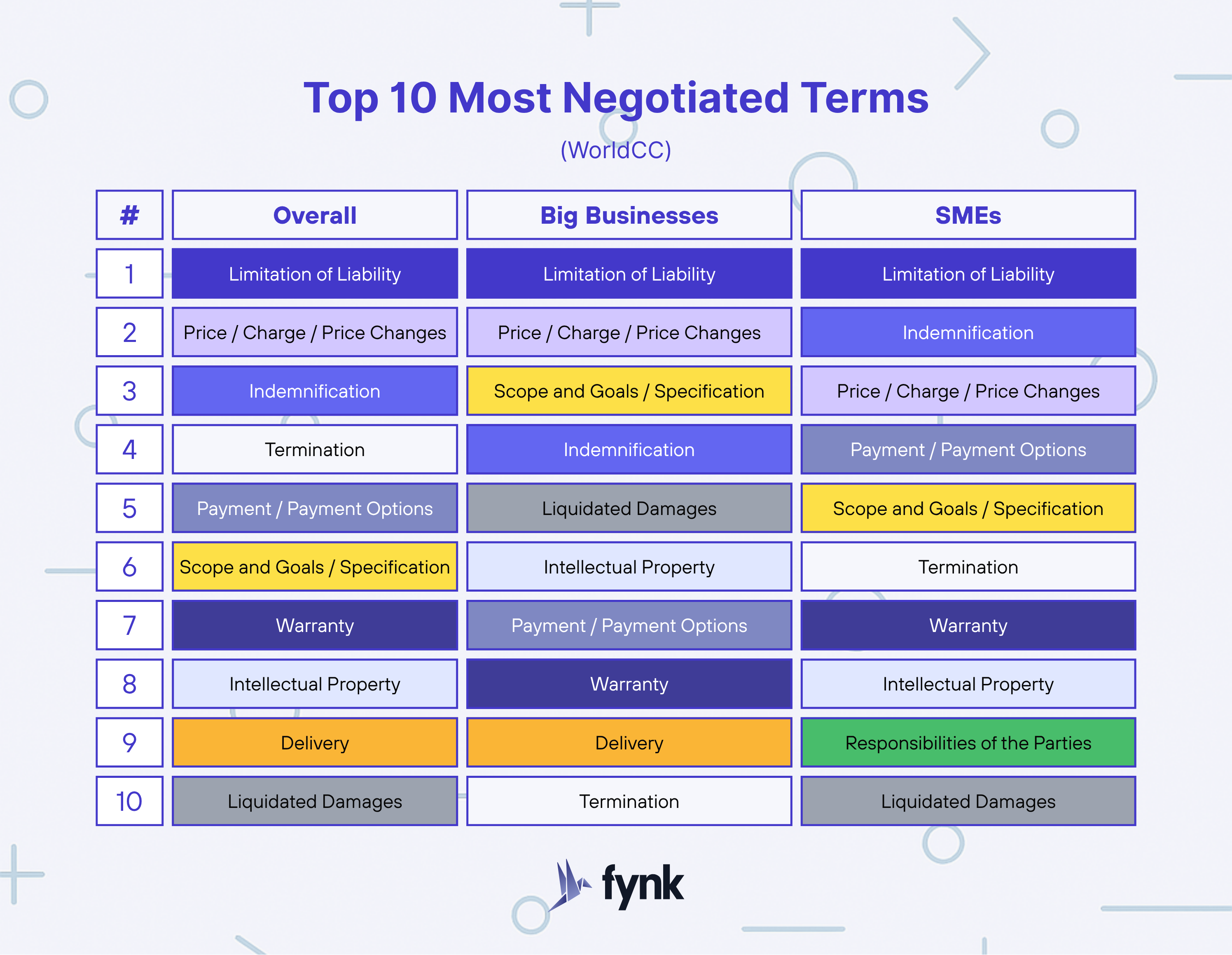


E-signatures and storage
And then, finally, signatures.
🚀 For vendors, this is the green light. The contract lands safely in their management system, tagged, tracked, and timestamped. They exhale and move to onboarding.
🛒 For buyers, there’s a sense of relief and maybe a touch of anxiety. Now it’s real. The software is coming. They file the PDF in a secure folder, add renewal reminders, and get ready to see if the promises hold up.
"The two things that really made me think, ‘Oh, this [fynk] could be the tool’ were the bulk signing—doing contracts in bulk—and then also setting up the whole contract in a tool."

Founder and Director at maven
Sign
any
Document in Less than
a Minute.
Tracking performance and compliance
Now comes the living part of the contract, the part that actually breathes.
🚀 Vendors deliver. They watch dashboards and uptime metrics, making sure every promise inked months ago still stands tall. Great vendors don’t just meet obligations; they communicate them, turning transparency into loyalty.
🛒 Buyers, meanwhile, measure. They compare what was promised with what’s delivered. They hold vendors accountable, but not like adversaries, more like partners trying to keep the rhythm steady.
🔍 A healthy contract doesn’t police; it guides. It reminds both sides why they started working together in the first place.
Renewal or termination
Every renewal is a chance to rewrite the story, stronger, smarter, and with clearer intentions.
🚀 For the vendor, this is the moment of truth. Renewal isn’t about persuasion; it’s about reflection. Did the product deliver value? Did support feel human? Renewal conversations go best when they’re not surprises.
🛒 For the buyer, it’s a question of worth. Is this still the tool we need? Maybe yes, maybe it’s become indispensable. Or maybe it’s time to explore alternatives.
"We lost money because we missed termination deadlines. That was the moment we knew our old approach had to change."

Legal Solutions Manager at Unite
5 Mistakes to avoid when doing contract management in SaaS
Too many tools, too little visibility
🚀 For vendors, it often starts with enthusiasm. Every department wants its own platform for managing quotes, documents, and signatures. Before long, you’ve got a maze of spreadsheets, CRMs, and storage drives. The problem isn’t a lack of tools; it’s that no one knows where the latest contract version lives.
🛒 For buyers, the issue is similar but inverted. Procurement uses one system, IT another, legal a third. When a renewal date sneaks up, no one’s sure who owns the relationship or what the original terms were.
✅ Solution: Centralize all contracts in one secure platform like fynk to keep every version, team, and deadline visible in a single place.
"Our biggest gain is having one central hub for all contracts. No more folders or email chains. Everything is secure and transparent"

Legal Solutions Manager at Unite
Complex pricing and sneaky renewals
🚀 Vendors love to innovate on pricing models, but complexity can backfire. When buyers don’t understand how costs scale, they feel tricked, even if the numbers are technically correct. Transparent communication beats clever pricing every time.
🛒 Buyers sometimes forget to track how pricing tiers evolve with usage. What started as a fair deal can quietly grow into a budget-buster.
✅ Solution: Set up a clear pricing tracker that links each contract to its current plan, usage, and renewal terms. Review these quarterly with finance to catch price changes early and renegotiate before renewals lock in.
Missed deadlines and auto-renewal surprises
Contracts don’t fail because of missing signatures. They fail because of missed reminders.
🚀 For vendors, it’s easy to assume renewals will just happen. But without a clear communication process, buyers can feel blindsided and pull out instead of renewing.
🛒 For buyers, auto-renewal clauses can slip through unnoticed. One forgotten calendar reminder, and you’re paying for another year of a platform you planned to leave behind.
✅ Solution: Automate renewal alerts and reminders so you never miss a date or pay for something you no longer use.
Security, compliance, and governance headaches
This is the quiet part of contract management — the one that only gets loud when something goes wrong.
🚀 Vendors have to balance innovation with responsibility. Every new feature or integration must align with data protection laws and industry standards. Skipping governance steps for speed is a risk that always catches up.
🛒 Buyers, on the other hand, often sign off on security clauses they don’t fully audit. Later, when compliance teams dig deeper, the contract doesn’t hold up under scrutiny.
✅ Solution: Manage every agreement in a compliant, audit-ready system that enforces consistent clauses and data protection standards.
Legal, IT, and finance not talking to each other
This one might be the most human of all the mistakes.
🚀 Vendors sometimes operate in silos: legal writes the contracts, sales closes the deals, finance tracks the invoices, and IT manages delivery. But when those teams don’t sync, the customer experience cracks.
🛒 Buyers face the same disconnect in reverse. Legal approves one thing, IT implements another, finance pays for something slightly different. The result is frustration on both sides and a contract that no one truly owns.
✅ Solution: Connect all departments through one shared workspace in fynk so every team works from the same contract data and updates in real time.
How to do SaaS contract management
Step 1: Keep every contract in one searchable place
Start by importing every document into a single, cloud-based contract repository. Tag them with metadata like renewal dates, contract owners, pricing models, and key obligations. Make it searchable, secure, and accessible to everyone who needs it.
🚀 For vendors, this creates a living record of your entire customer base, ready for audit or renewal conversations at a moment’s notice.
🛒 For buyers, it means no more surprises when a renewal notice lands. You can see what you own, what you owe, and what’s next.
Step 2: Create standardized templates of your contracts
Standardization doesn’t kill flexibility; it creates space for smarter decisions.
🚀 Vendors can use standardized templates to ensure every new deal aligns with approved terms. No more reinventing clauses for each customer. No more version chaos.
🛒 Buyers can create their own review checklists or preferred terms to compare against vendor templates. It shortens negotiations and prevents unwelcome surprises later.
Step 3: Automate approvals and reviews
Set up automated workflows so contracts move to the right people at the right time. Legal reviews, finance checks, and final approvals should happen inside your contract management platform, not across endless email threads.
🚀 For vendors, this means faster sales cycles and fewer blockers.
🛒 For buyers, it means accountability and a clear audit trail.
Step 4: Set up renewal and termination alerts
Create alerts and reminders for every key milestone. Automate renewal notices at least 90 days in advance so there’s time to evaluate performance, pricing, and satisfaction.
🚀 For vendors, it’s a chance to engage customers early and show value before renewal day.
🛒 For buyers, it’s the difference between a proactive decision and a reactive expense.
💬 Never let a contract renew without a conversation.
Step 5: Clean up onboarding and offboarding workflows
When new contracts are signed, onboarding should feel like the beginning of a partnership, not a paperwork chore. When contracts end, offboarding should be clean and compliant.
🚀 Vendors should automate provisioning, welcome communications, and early usage insights. Make the first 30 days feel seamless and confident.
🛒 Buyers should ensure offboarding includes revoking access, removing data, and confirming termination obligations.
Step 6: Stay audit-ready (without stress)
No one loves the word “audit,” but being audit-ready doesn’t have to mean living in fear of it.
🚀 Vendors should keep version histories, approval trails, and data access logs organized and easy to retrieve. The right system can generate reports in seconds.
🛒 Buyers should maintain compliance records for every SaaS vendor, especially those handling sensitive data.
The goal isn’t just passing an audit. It’s being able to say, with confidence, we know exactly what’s in our contracts and we’re living by them.
Choosing the right SaaS contract management tool
Picking a contract management tool should be about finding a system that fits your workflow, cuts admin time, and gives you full visibility into every contract you own or issue.
Key features to look for (for both sellers and buyers)
- Renewal and license tracking: Automatic alerts before renewals or expirations, ideally 60–90 days in advance.
- Centralized repository: One searchable database for all contracts with metadata like owner, value, and term.
- Workflow automation: Automated routing for reviews and approvals to avoid bottlenecks.
- E-signature integration: Built-in or connected to e-signing platforms.
- Analytics and reporting: Real-time visibility into active contracts, renewal pipeline, and spend.
- Security and compliance: Encryption, access control, and alignment with standards like ISO 27001 and GDPR.
- Version control: Track edits, maintain document history, and prevent overwriting.
- Scalability and performance: Handle growing contract volumes without performance issues.
- Ease of use: Intuitive interface that non-legal teams can navigate quickly.
- Support and onboarding: Responsive support, implementation guidance, and clear documentation.
Specifically for SaaS Sellers (Vendors) 🚀
Vendors handle large volumes of similar contracts and need systems that help them move faster while staying compliant and protecting revenue.
- CRM integration: Sync directly with CRMs like Salesforce, HubSpot, or your sales tool to generate contracts instantly from deals.
- Automated approvals: Set rules for legal, finance, or management sign-off to shorten sales cycles.
- Template and clause library: Pre-approved templates and reusable clause library to ensure consistency.
- Renewal pipeline tracking: View renewals by customer, ARR value, or risk category.
- Multi-entity support: Manage contracts across subsidiaries, regions, or product lines.
- Customer success visibility: Allow CSMs to see renewal and contract terms directly in their tools.
- API access: Use API to integrate with billing, ticketing, or subscription systems to connect contract data with operations.



Notification and reminders settings in fynk
Specifically for SaaS buyers 🛒
Buyers focus on cost control, risk reduction, and vendor oversight. The right system should make it easy to track spend, monitor renewals, and evaluate vendor performance.
- Spend visibility: Dashboards that show total spend by vendor, department, and renewal cycle.
- Procurement and finance integration: Connect to systems like Coupa, NetSuite, or SAP for end-to-end tracking.
How fynk helps you manage SaaS contracts better
If you’re looking for a tool that actually makes contract management easier, not more complicated, fynk was built for that. It brings your contracts, approvals, and renewals into one simple workspace that teams can actually use.
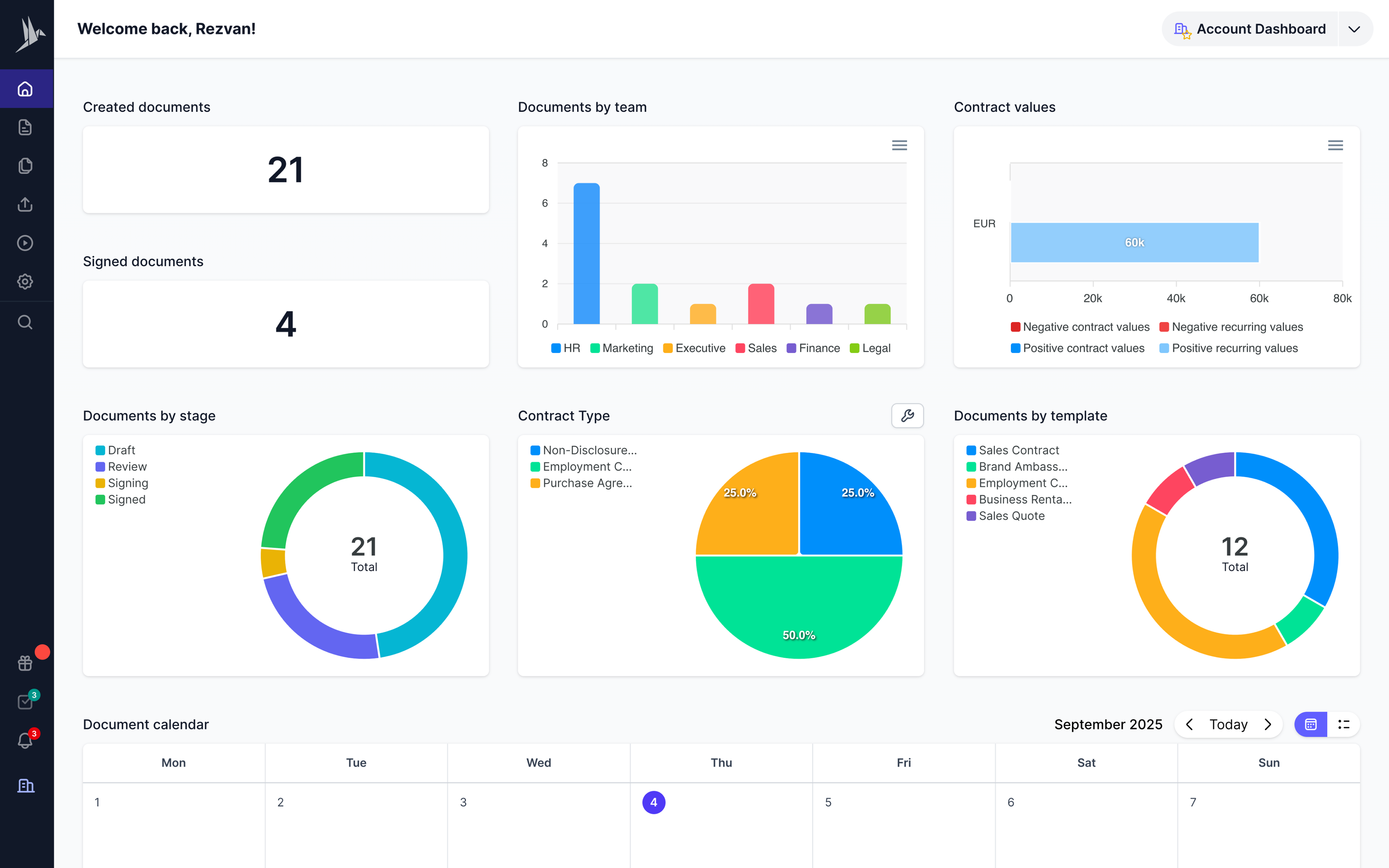


fynk dashboard
With fynk, you can:
- Keep every SaaS contract organized and searchable in one secure place.
- Automate approvals and reminders so nothing slips through the cracks.
- Use templates and clause libraries to speed up drafting and stay consistent.
- Track renewals, spend, and performance with clear dashboards.
- Connect tools like Salesforce, HubSpot, or NetSuite to keep everything in sync.
fynk doesn’t try to change how you work, it just makes it smoother, faster, and a lot less messy.
Try it for free:
Searching for a contract management solution?
Find out how fynk can help you close deals faster and simplify your eSigning process – request a demo to see it in action.
Frequently asked questions
- What’s the difference between SaaS contract management and subscription management?
- SaaS contract management handles the legal and operational side, such as agreements, renewals, and compliance. Subscription management focuses on billing, payments, and customer subscriptions. If you’re a vendor, connect both so your process runs smoothly from contract to cash.
- Who should own SaaS contract management inside a company?
- For buyers, it often sits with procurement or legal, but it involves IT and finance too. For vendors, it usually lives between sales operations and legal, with finance managing renewals and reporting. The key is to have one accountable owner who keeps visibility and consistency across teams.
- What metrics should I track to measure SaaS contract performance?
- For buyers, focus on renewal rate, vendor uptime or SLA compliance, and cost per active user. For vendors, track renewal and churn rates, average deal cycle length, and contract value growth from upsells or expansions.
- What’s the biggest legal risk in SaaS contracts?
- For vendors, it’s data breaches or service outages that break your SLA. For buyers, it’s unclear data ownership or vague termination language. Always define who owns the data, how it’s protected, and what happens when the agreement ends.
- How early should you start renewal discussions?
- If you’re a vendor, start about 90 days before the renewal date to show value and discuss upgrades. If you’re a buyer, review contracts at least 60 days before renewal to check usage, performance, and cost before signing again.
- What’s the difference between auto-renewal and evergreen contracts?
- An auto-renewal extends the agreement for a fixed term, such as another year, unless someone cancels it. An evergreen contract continues until one side ends it. Buyers should track both carefully, and vendors should communicate renewal dates clearly.
- What are some early signs your contract management process needs an upgrade?
- You’ve missed a renewal or paid for unused licenses. Teams can’t find the latest version of a contract. Approvals take longer than closing the deal itself. Legal doesn’t have an easy way to monitor obligations or risks. If any of these sound familiar, it’s time to move beyond spreadsheets and adopt a proper CLM platform.
Please keep in mind that none of the content on our blog should be considered legal advice. We understand the complexities and nuances of legal matters, and as much as we strive to ensure our information is accurate and useful, it cannot replace the personalized advice of a qualified legal professional.

Table of contents
- What is SaaS contract management?
- Why your SaaS contract management needs CLM support
- How SaaS contracts differ from old-school software deals
- What every SaaS contract should include
- Contract lifecycle stages for SaaS: from creation to renewal
- 5 Mistakes to avoid when doing contract management in SaaS
- How to do SaaS contract management
- Choosing the right SaaS contract management tool
- Frequently asked questions
Want product news and updates? Sign up for our newsletter.
Other posts in Guides
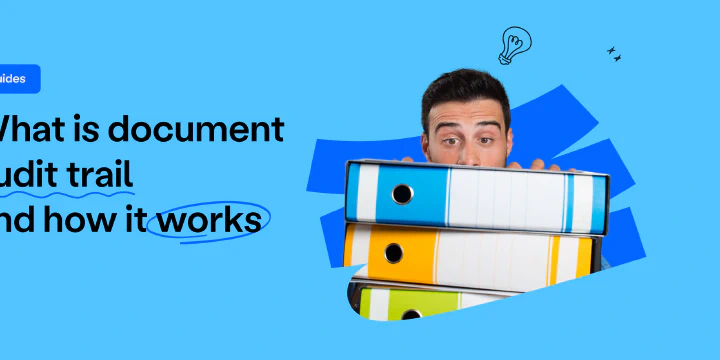
What is a document audit trail and how it work
When you’re dealing with regulated processes, contracts, or any kind of business documentation, having a clear …
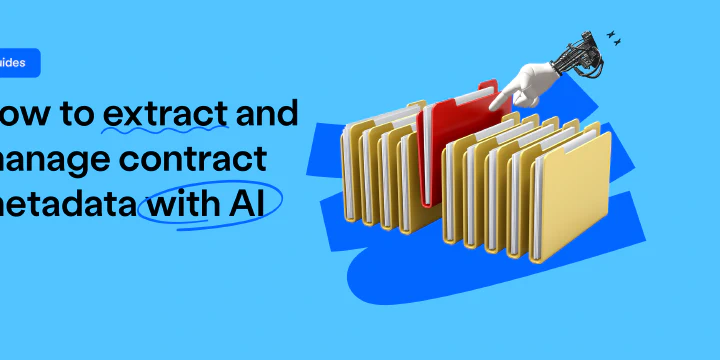
How to extract and manage contract metadata with AI
Contracts contain critical information, but finding it shouldn’t take hours. Instead of manually searching …
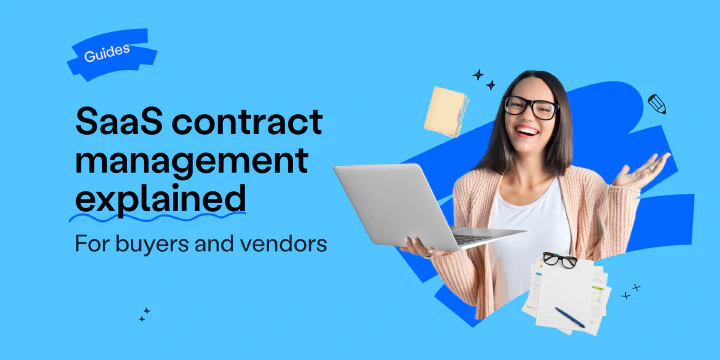
SaaS contract management explained for buyers and vendors
If you work in SaaS, you know how quickly contracts can pile up. Each one comes with its own terms, renewals, …
Other posts in Contract-Management

SaaS contract management explained for buyers and vendors
If you work in SaaS, you know how quickly contracts can pile up. Each one comes with its own terms, renewals, …
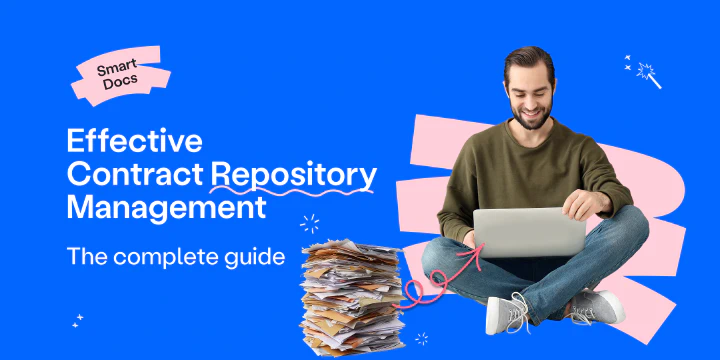
The Complete Guide to Effective Contract Repository Management
A contract repository is where every agreement your business depends on finally finds its place. No cluttered …
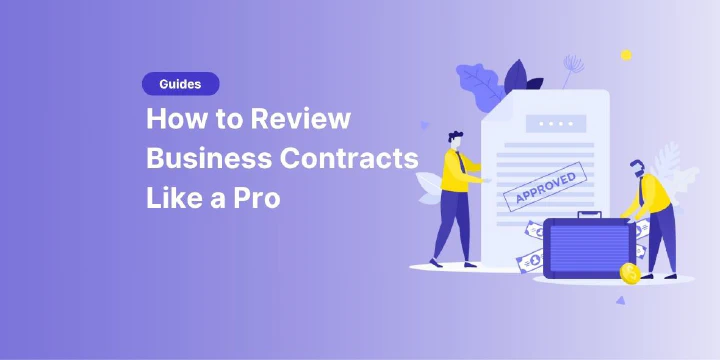
How to Review Business Contracts Like a Pro in 2025
When it comes to business contracts, what you don’t catch can hurt you. That’s why reviewing a business …
Contracts can be enjoyable. Get started with fynk today.
Companies using fynk's contract management software get work done faster than ever before. Ready to give valuable time back to your team?
Schedule demo
